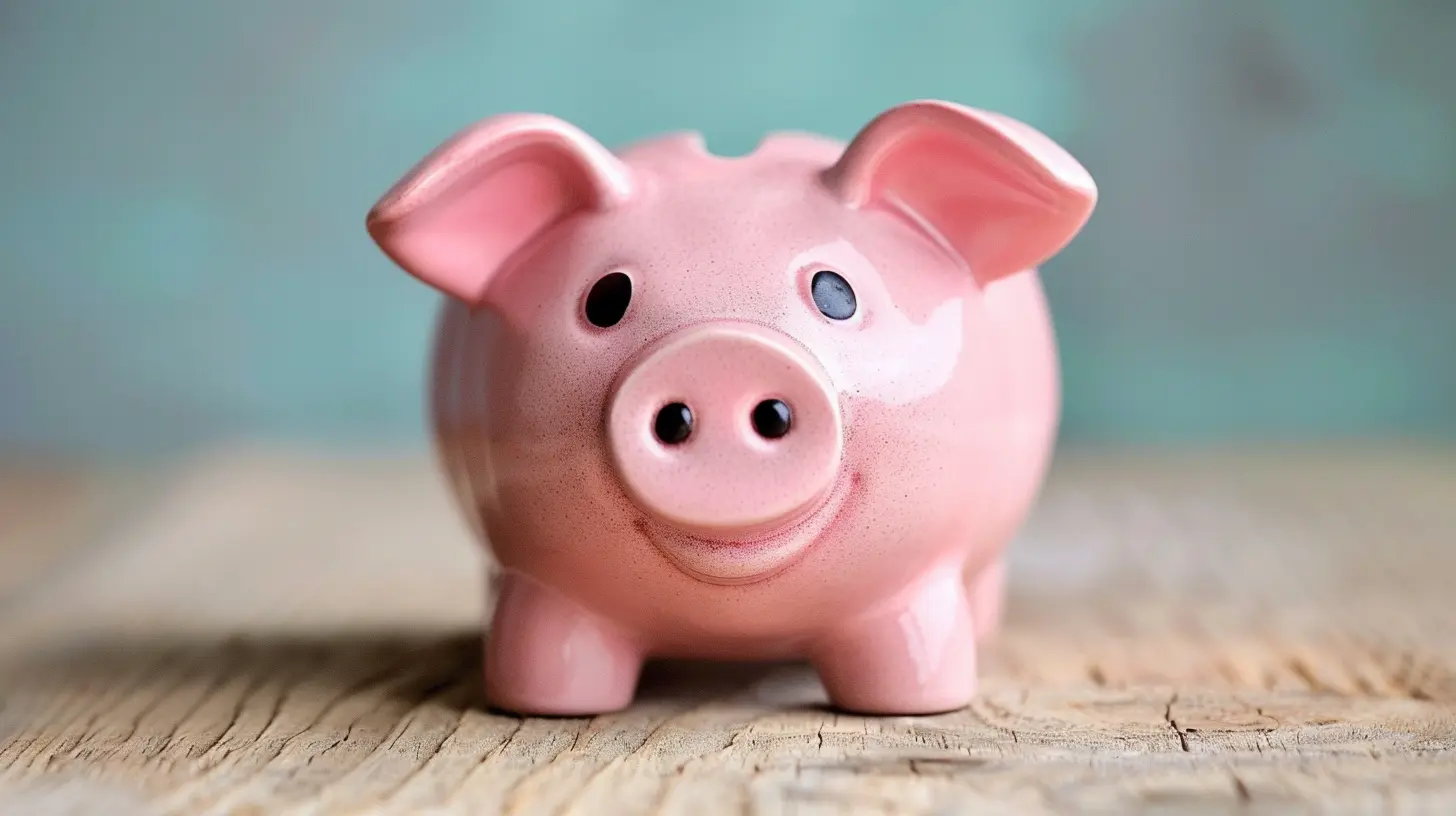The Role of Dividends in a Roth IRA Portfolio
4 July 2025
When it comes to building wealth for retirement, a Roth IRA is one of the most powerful tools around. But here’s the thing — most people think of a Roth IRA as just a savings account for stocks or mutual funds that hopefully grow over time. What often gets overlooked? Dividends. Yup, those little cash payments companies give their shareholders can play a huge role in supercharging your Roth IRA portfolio. And trust me, once you understand how dividends work in this tax-advantaged space, it will feel like unlocking a cheat code for retirement planning.
In this article, we’ll break down exactly how dividends fit into a Roth IRA, why they can be a game-changer, the best ways to use them, and the common pitfalls to avoid.
What Are Dividends, Anyway?
Before we dive into the magic they create in a Roth IRA, let’s hit the basics. A dividend is basically a portion of a company’s earnings that it pays out to shareholders — you know, as a “thank you” for being an investor. They’re usually paid quarterly, and they can come in the form of cash or additional shares.Think of dividends like receiving rental income without the headache of owning property. You invest in solid companies, and they pay you just for holding their stock. Not too shabby, right?
Roth IRA 101: A Quick Refresher
In case you need a quick reminder, Roth IRAs are individual retirement accounts where you contribute after-tax dollars. The real perk? Your investments grow tax-free, and you can make tax-free withdrawals in retirement — as long as you follow the rules (like being age 59½ or older and holding the account for at least five years).Now add dividends to the mix, and things get very interesting.
Why Dividends Matter in a Roth IRA
1. Tax-Free Growth on Steroids
Here’s the golden nugget: Dividends in a Roth IRA are not taxed — ever — as long as you stick to qualified withdrawals.In a regular taxable brokerage account, dividends usually get taxed. Qualified dividends get hit with capital gains tax, and non-qualified dividends get taxed at your ordinary income rate. But in a Roth IRA? You keep 100% of the dividend income. Uncle Sam doesn’t touch it.
Let that sink in.
That means every single dividend payment you receive in your Roth IRA can be reinvested and allowed to compound tax-free. Over the years, this can add serious muscle to your retirement growth.
2. Compounding Returns — The Silent Powerhouse
Albert Einstein may have called compound interest the eighth wonder of the world, but dividends crank up compounding like it’s on steroids.Let’s say you earn $1,000 in dividends this year and reinvest them into more dividend-paying stocks. Next year, you’ll earn dividends on your original investment plus the reinvested amount. Do this for 20, 30, or 40 years in a Roth IRA — without paying taxes — and the results are bananas.
Even modest dividend yields can snowball into significant sums, especially if you're consistent with reinvesting.
3. A Source of Passive Income in Retirement
Eventually, you’ll get to the point where you’re ready to start drawing down from your Roth IRA. Since qualified withdrawals are tax-free, dividend income at that stage can become a reliable, steady stream of cash — without creating a tax burden.In other words, your dividends can help replace your paycheck when you walk away from the 9-to-5 grind. No tax paperwork. No stress. Just income.
Strategies for Using Dividends in a Roth IRA
So how do you actually put dividends to work in your Roth IRA? Good question. You’ve got a few smart options to consider here.1. Reinvest Dividends Automatically
One of the best choices early in your retirement planning is to reinvest all your dividends. Most brokerages allow you to set this up so you don’t even have to think twice. Those automatic reinvestments buy more shares, which leads to more dividends, which buys more shares... You get the idea.This strategy turns your Roth IRA into a compounding machine.
2. Hold Dividend Growth Stocks
Dividend growth stocks are companies that not only pay dividends but increase them year after year. Think of big names like Johnson & Johnson or Procter & Gamble. These companies have a track record of rewarding investors, even during rough economic times.By focusing on dividend growth stocks, you can grow both your income and account balance over time. It’s like planting a money tree that gets bigger every year.
3. Build a Retirement Income Ladder
As you get closer to retirement, you can start transitioning from growth to income. That could involve shifting your Roth IRA investments toward high-yield dividend stocks or dividend ETFs. The focus here is generating enough tax-free income to cover some (or all) of your monthly expenses.You can think of this like building a ladder — making sure you have income from dividends coming in regularly so you don’t have to sell your investments.
What About Dividend-Paying ETFs and Mutual Funds?
If you don’t want to pick individual stocks, no problem. There are tons of high-quality ETFs and mutual funds that focus on dividend-paying companies. Popular names include:- Vanguard Dividend Appreciation ETF (VIG)
- Schwab U.S. Dividend Equity ETF (SCHD)
- SPDR S&P Dividend ETF (SDY)
These funds can give you instant diversification while still delivering solid, steady dividend income. Plus, they’re low-maintenance and often come with lower risk than holding single stocks.
Things to Watch Out For
Dividends are awesome, especially in a Roth IRA, but that doesn’t mean you should blindly chase them. Here are a few pitfalls to avoid:1. Falling into the High-Yield Trap
A super high dividend yield might look sexy on paper, but it’s often a red flag. Companies offering double-digit yields may be doing so because their stock price has crashed — a sign of trouble. If that dividend gets cut, your income and your investment take a hit.Stick with quality. Look for consistent earnings, solid balance sheets, and a history of dividend stability (or growth).
2. Ignoring Total Return
Dividends are just part of the equation. The best Roth IRA portfolios balance dividend income with capital appreciation. Don’t sacrifice overall portfolio growth just to chase dividends. A good mix is key.3. Not Rebalancing Over Time
If your dividend stocks outperform, they might start to take up a bigger chunk of your portfolio than you’re comfortable with. It’s smart to rebalance annually — sell a little from your winners and redistribute to maintain your risk profile.Real-Life Example: The Power of Dividends in Action
Let’s say you start investing in dividend-paying stocks in your Roth IRA at age 30. You contribute $6,500 a year, and you choose a blend of dividend growth stocks and ETFs that average a 3.5% yield with moderate capital appreciation.Here’s what you could be looking at by age 65:
- Total Contributions: $227,500
- Portfolio Value: Over $1 million+
- Annual Dividend Income (from the portfolio): $35,000 — tax-free.
That’s a potential $35,000 per year that doesn’t get taxed and doesn’t require you to sell shares. And it can keep growing even in retirement.
Not bad for just staying consistent, right?
So, Should You Focus on Dividends in Your Roth IRA?
Absolutely — but with a strategy.Dividend investing in a Roth IRA is like cooking with spices. When used right, it enhances the flavor of your entire portfolio. Combined with the Roth’s tax-free treatment, dividends can be a powerful force for both accumulation and income in retirement.
But don’t throw everything into high-yield stocks and call it a day. Blend your dividend strategy with growth investments, stay diversified, and keep your long-term goals in mind.
Final Thoughts
Dividends in a Roth IRA aren’t just a nice bonus — they can be a foundational piece of your retirement strategy. By reinvesting them during your working years and using them as tax-free income later, you create a system that works quietly and efficiently behind the scenes.It's all about letting your money work for you in the smartest way possible. So next time someone tells you dividends are boring, send them this article. Because boring? Boring can be beautiful — especially when it’s building you a tax-free retirement.
all images in this post were generated using AI tools
Category:
Roth IraAuthor:

Eric McGuffey
Discussion
rate this article
1 comments
Harley McElveen
Dividends are the lifeblood of a thriving Roth IRA portfolio! They not only boost your returns but also create a sustainable income stream for the future. Harness their power to achieve financial freedom and watch your investments grow exponentially!
July 15, 2025 at 10:15 AM

Eric McGuffey
Thank you for your insights! Dividends indeed play a crucial role in enhancing returns and building sustainable income within a Roth IRA. Your enthusiasm for harnessing their potential is inspiring!


